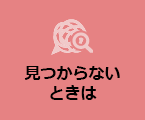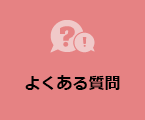The Jomon period: an outline
For instance, the Jomone period/ culture was the Neolithic period/ culture of Japan, or it corresponds to the Neolithic period/ culture for its cultural features and the chronological position in Japanese prehistory.
Then,
- How many years ago? How long had the Jomon period lasted?
- What did they eat? How did the Jomon people lived?
- What was the biggest features of the Jomon culture?
- The national treasure "Dogu"? - First of all, what was "Dogu"?
How long had the Jomon period lasted?
The Jomon period had started around 13,000yrBP and ended around 2,300 yrBP. The Jomon period followed the Palaeolothic period and was followed by the Yayoi period of Japan.
However the lack of agriculture and domestication of animals, the Jomon period corresponds to the Neolithic culture for the most part. [See details for the way of Jomon life.]
Most of the archaeologists in Japan had accorded with the date shown above before, however, recent research of radiocarbon dating has urged the archaeologists to reconsider the duration of the Jomon period.
Today, the beginning of the Jomon period is estimated possibly older than 15,000calBP and the end is estimated possibly around 2,900 calBP.
How did the Jomon people live? : their subsistence
Entirely, the Jomon people are considered to be hunter-gatherer-fishers. They fully used the natural resources of four seasons in the Japanese archipelago.
- In spring: they gathered edible wild greens in mountains and also gathered shellfish at beach.
- In summer: they went far out to sea and obtained fish.
- In autumn: the plentiful nuts and wild fruit would become enough food to the Jomon people.
- In late autum and winter: they hunted deer and wild boar.
And they made pottery or maintained their houses, tools like axes or arrows, clothes and some sharing facilities in the intervals of gathering and hunting. They also came and went in order to exchange the local goods that were yielded limitedly by region, such as obsidian and jade.
In central highlands including the foot of Mt. Yatsugatake, they lived on gathering nuts ;such as chestnuts (Castanea crenata), walnuts (Juglans) and acorn (Cerucus) and hunting animals such as deer (Cervidae) and wild boar (Bos).
Recently, some archaeologists have found the imprints of beans on the pottery surface. Such imprints have been observed not only one sample of pottery, but also many samples from many Jomon sites. So we have argued the possibilty of the positive utilization of beans in the Jomon period and some people strongly insist the existance of the cultivation or even agriculture in the Jomon period.
We found such imprints on the pottery excavated from the sites of Chino.
The "Too Much Decorated" pottery of Jomon: the most standing-out feature
One of the most standing-out feature of the Jomon culture is surplus decoration on the pottery. The Jomon people are considered to be hunter-gather-fishers, but also the high-skilled pottery producers and they would provide enough time to make such decorated pottery.
How much did the Jomon people decorate the pottery? Please see below
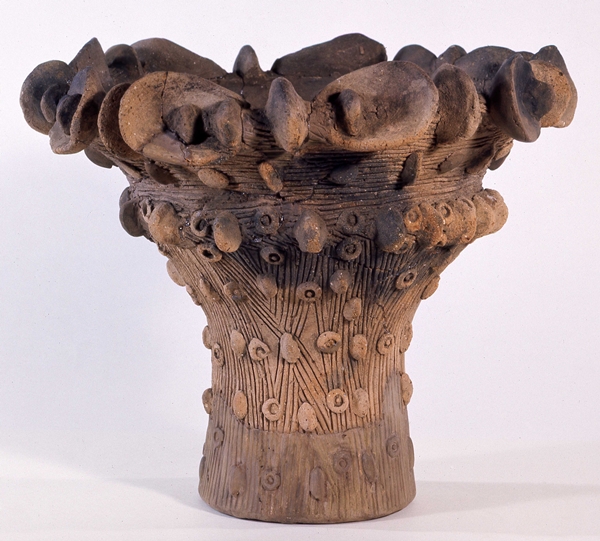
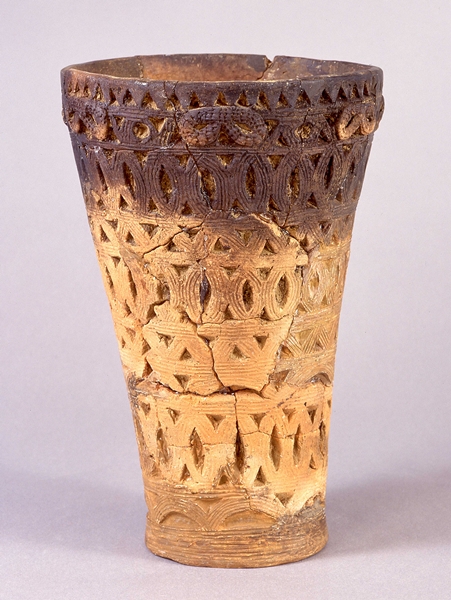

Examples of surplus decoration of the Jomon pottery (early period: approximately 6000yrBP - 5000yrBP/ 7000calBP - 5500 calBP)
You can see the shell shaped decoration on the rim (left).
Basket-like engraved patterns on the surface (center and right)


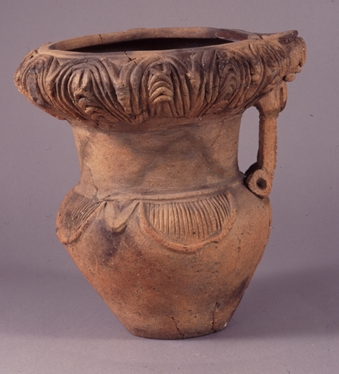
Examples of the pottery with handle-like modification in middle period of Jomon (approximately 5000yrBP - 4000yrBP/ 5500calBP - 4400calBP)
Hollowed "handle-like" decoration on the rim (left and center). They seem top-heavy and clumsy to use, but the Jomon people made a number of such pottery carefully.
Seemingly, the pottery with the handle that could be grasp (right). But it would be easily broken if the Jomon people had grasped.
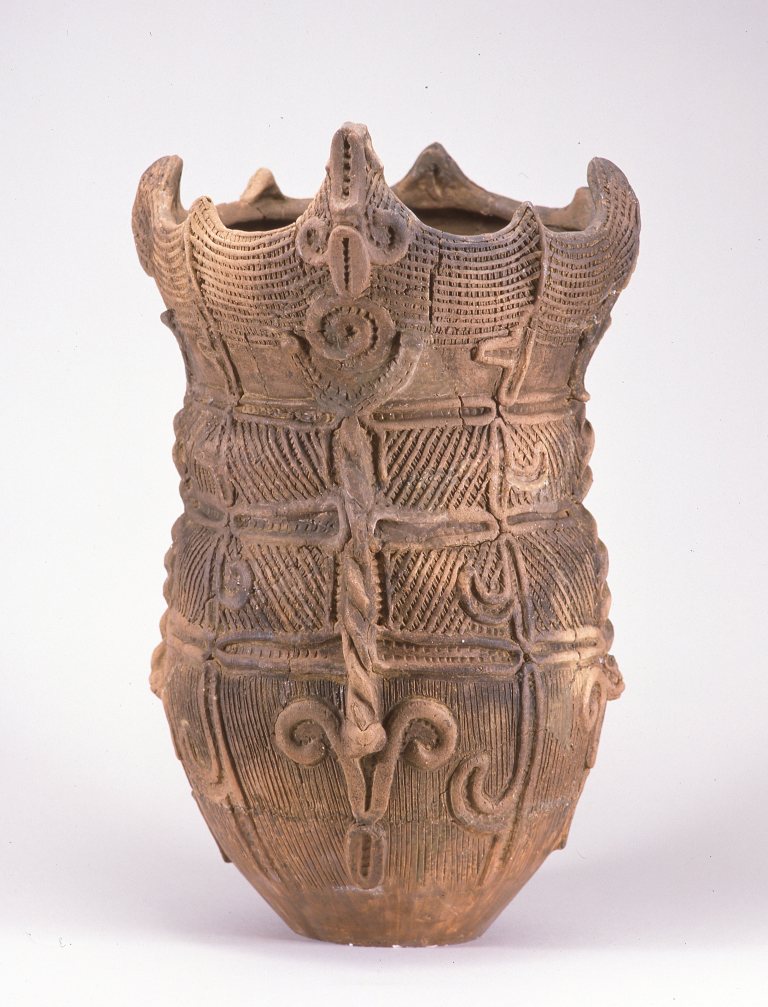


Other examples of the pottery made while the middle period of Jomon.
A big-sized (60cm height) pottery with numerous "clay strings" on the surface (left).
Close-up surface of it: you can see the engaved lines on the base and numerous clay strings put on it (center).
The TWIN pottery (right). How did the Jomon people made it? What made the Jomon people modify such pottery?
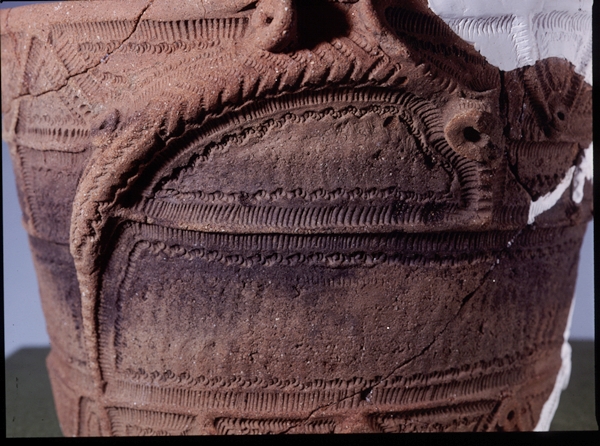

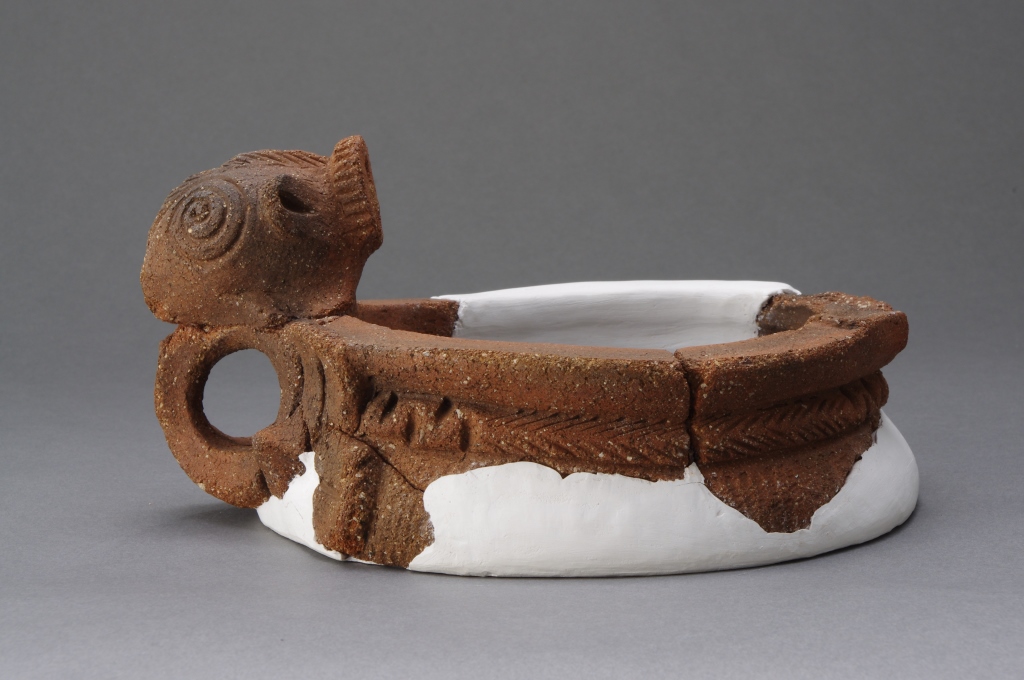
Other examples of the pottery made while the middle period of Jomon, with the expression of some creatures.
Pottery with relief-like decoration of a lizard or snake (left).
Screwed snake decoration tipped on the rim (center).
Bos on the rim (right).
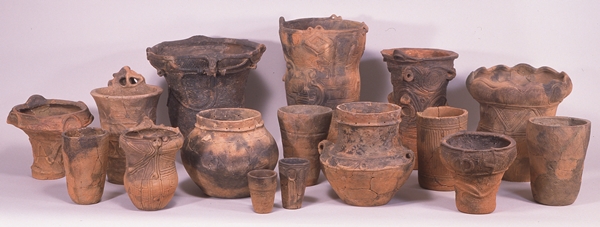
An assemblage of the pottery in middle period of Jomon. Various size and shape can be seen. Such difference would possibly reflect the functional difference.
Dogu: what were they?
Sacred spirits? or charms of luck for an easy delivery?
Dogu is clay figure (figurine) made while the Jomon period. They emerged around 11,000yrBP and the Jomon people made them much after the middle period.
Dogu has some features as follows:
- Most of them were found broken.
- Large-sized dogu were relatively in good condition, oppositely the smaller dogu were mostly broken.
- Dogus made before the middle period don't have face and also the expression of pregnancy is not so clear. But those made after the middle period have face and the obvious expression of pregnancy.

The archaeologists of Japan consider that the dogu were broken for the Jomon people's ceremonial reason: the dogu was the object representative of a sacred spirit and it was broken intentionally to complete or finish the ceremony.
Or the Jomon people broke the dogu's same part as the person's injured part when they wanted and prayed to be cured.
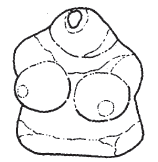
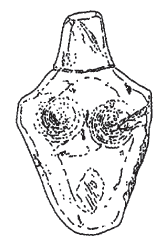
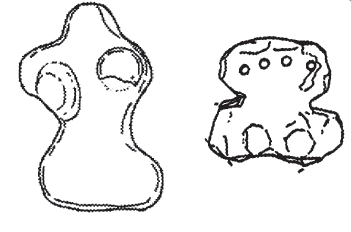
Examples of the dogu before the middle period of the Jomon. They weren't expressed the face, even the head. Dr Kobayashi says that the dogu was made as the expression of the unseen sacred spirits, so the Jomon people had strongly avoided to express face in detail.
Oppositely, the parts of the heads after the middle period of the Jomon as follows:


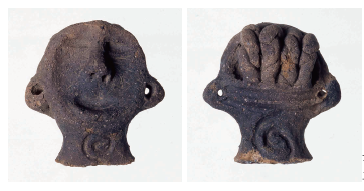
They have faces and their face are different each other. And also they have been expressed pregnancy generally after the middle period. So the dogu possibly got the new character (or role) as the charm of luck for an easy (safe) delivery.
Anyway, dogu have been found broken usually. That fact makes two national treasures "Jomon no Venus" and "Kamen no Megami" extraordinary. Then, what features can we observe on those two national treasures? What difference do they have?
Please see the links below: National Treasure "Dogu" part 1 and 2!
